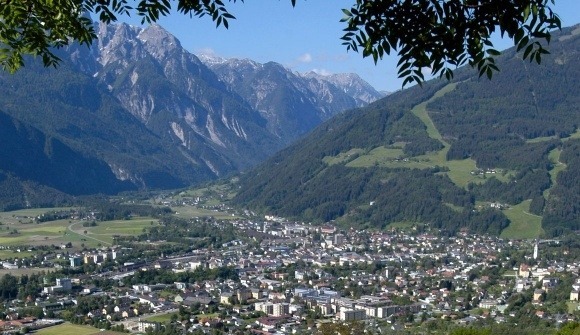

"Safeguard natural buffers to enhance the protective functions offered by natural ecosystems. Identify, protect and monitor critical ecosystems services that confer a disaster resilience benefit.”
Ecosystems provide critical services for disaster risk reduction as protective barriers against hazards. They are central to hazard mitigation by offering, for example, flood regulation and protecting steep slopes. They also enhance the resilience of community to withstand, cope with and recover from disasters through providing many livelihood benefits, such as food, firewood, clean water and the likes. A degraded ecosystem is thus unable to provide these mitigation and resource benefits, which in turn significantly increase community vulnerability. Through the process of urban expansion, cities transform their ecosystems and often generate new risks. Recognising the economic value and multiple benefits of healthy ecosystems acting as natural buffers are important for reducing risks and contributing to urban resilience and sustainability.
Relevant ecosystem services may include, but are not limited to: water retention or water infiltration; afforestation; urban vegetation; floodplains; sand dunes; mangrove and other coastal vegetation; and pollination. Many ecosystem services that are relevant to the city’s resilience may be provided well outside its geographical area.
- Recognise value and benefits from ecosystem services for disaster risk prevention, protect and /or enhance them as part of risk reduction strategies for cities.
- Integrate ecosystem services for more urban resilience into urban land use management, urban design and into relevant investment projects;
- Consider also natural buffers in the rural hinterland of the city and wider region, and cooperate with municipalities there to establish a regional approach of land use planning to protect the buffers.
- Anticipate changes from climate trends, urbanization and planning to enable ecosystem services to enable ecosystem services to withstand these.
In Hubei Province, China, a wetland restoration programme reconnected lakes to the Yangtze River and rehabilitated 448 km2 of wetlands with a capacity to store up to 285 million m3 of floodwater. The local government subsequently reconnected eight more lakes covering 350 km2. Sluice gates at the lakes are re-opened seasonally and illegal aquaculture facilities have been removed or modified. The local administration has designated lake and marshland areas as natural reserves. In addition to contributing to flood prevention, restored lakes and floodplains have enhanced biodiversity, increased income from fisheries by 20-30% and improved water quality to potable levels.
Read more in the UNDRR Global Assessment Report, chapter 6.4.
In New York, untreated storm water and sewage regularly flood the streets because the ageing sewerage system is no longer adequate. After heavy rains, overflowing water flows directly into rivers and streams instead of reaching water treatment plants. In New York City, traditional pipe and tank improvements are estimated to cost US$6.8 billion. Instead, New York City will invest US$5.3 billion in green infrastructure on roofs, streets and sidewalks. This promises multiple benefits. The new green spaces will absorb more rainwater and reduce the burden on the city’s sewage system, air quality is likely to improve, and water and energy costs may fall.
Read more about these initiatives at: http://tinyurl.com/84x4w9v, chapter 6.4.
The Overstrand Municipality in South Africa has faced rapid and seasonal population growth and projected shortages of water in the district of Hermanus, where rainfall has declined since 1997. Climate change threatens to bring more variable rainfall patterns and more extreme temperatures. In response, the municipality adopted a comprehensive water resource management and development programme, which draws on the national policy and legislative platform developed by the South African National Department of Water Affairs and Forestry. Seeking a longer-term, multi-stakeholder programme with growing public recognition of drought risk, two strategies were devised: better management of water demand and finding additional, sustainable sources of water. To locate local water sources, groundwater drilling was initiated, after careful analysis of various options. The permanent coordinating role of the local government was vital in conducting such a long-term, multi-stakeholder programme involving national and provincial water agencies, a regional biodiversity conservation institute and a group of community-based organisations. Uncertainty and skepticism among stakeholders regarding the extraction of groundwater was overcome by establishing a participatory monitoring committee and preparing baseline data.
For more information: http://www.unisdr.org/we/inform/publications/13627 (page 52).
-
Climate Variability and Change: Adaptation to Drought in Bangladesh – ADPC, FAO (2007)
A training guide and resource to help understand drought in the context of Bangladesh. -
Albay Province, Philippines: Responding to the Challenge of Disaster Risk Reduction and Climate Change Adaptation –Provincial Government of Albay and the Centre for Initiatives and Research on Climate Adaptation (SCR) (2010)
A case study using disaster risk reduction to achieve climate resilience. -
City of Cape Town, Coastal Zone Management Strategy – (South Africa)
This website provides an overview of city wide environmental issues. Search ‘Publications’ to find an integrated approach to coastal management in the city of Cape Town. -
U.S. Mayors' Climate Protection Agreement: Climate Action Handbook – ICLEI, City of Seattle, U.S. Conference of Mayors, U.S. Mayor’s Council on Climate Protection (2006)
Examples of actions that local governments can take to reduce global warming emissions and implement the commitments for climate protection. -
Manual on Flood Preparedness Program for Provincial and District Level Authorities in the Lower Mekong Basin Countries – ADPC; GTZ, ECHO, Mekong River Commission for Sustainable Development (2009)
Describes implementation arrangements required for flood preparedness planning and can be adapted to the needs and situation of other countries in Asia. -
Flood Plain Management Plan for the City of Venice – Venice City Council (2009)
http://tinyurl.com/d7tkbxx Supplement to the county-wide LMS and regional floodplain management plan 2010-2015.
